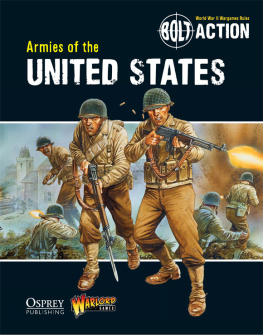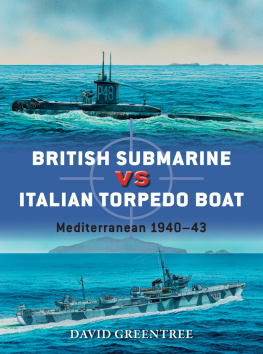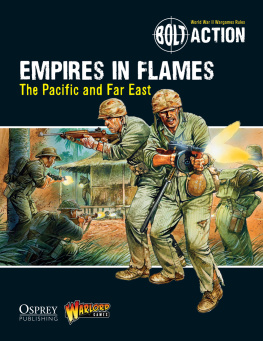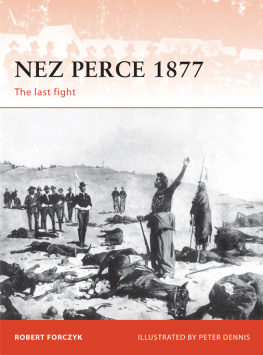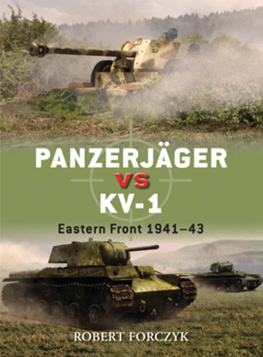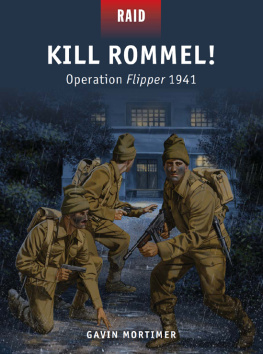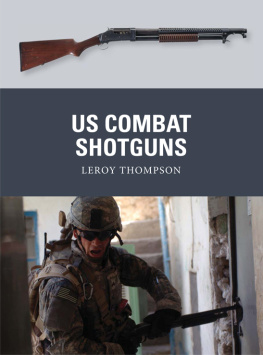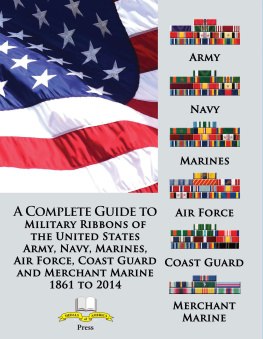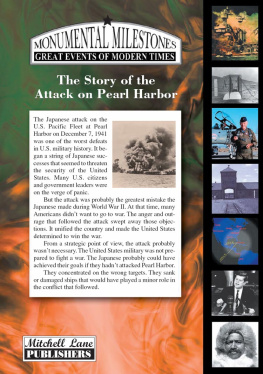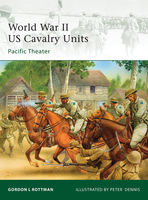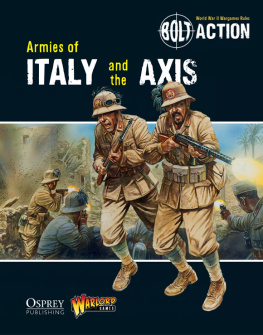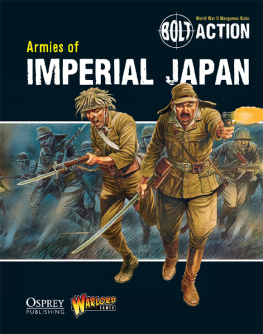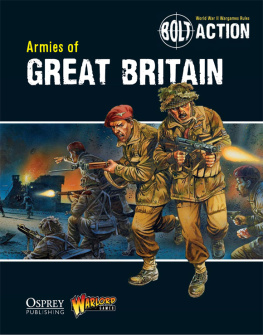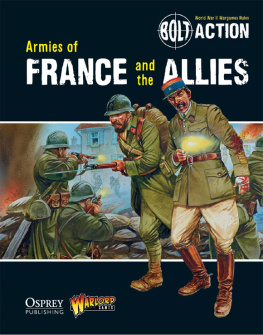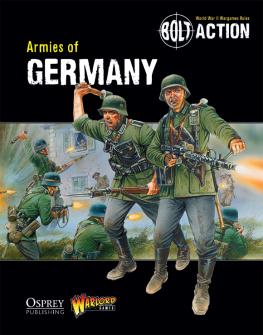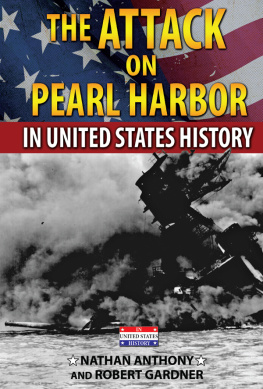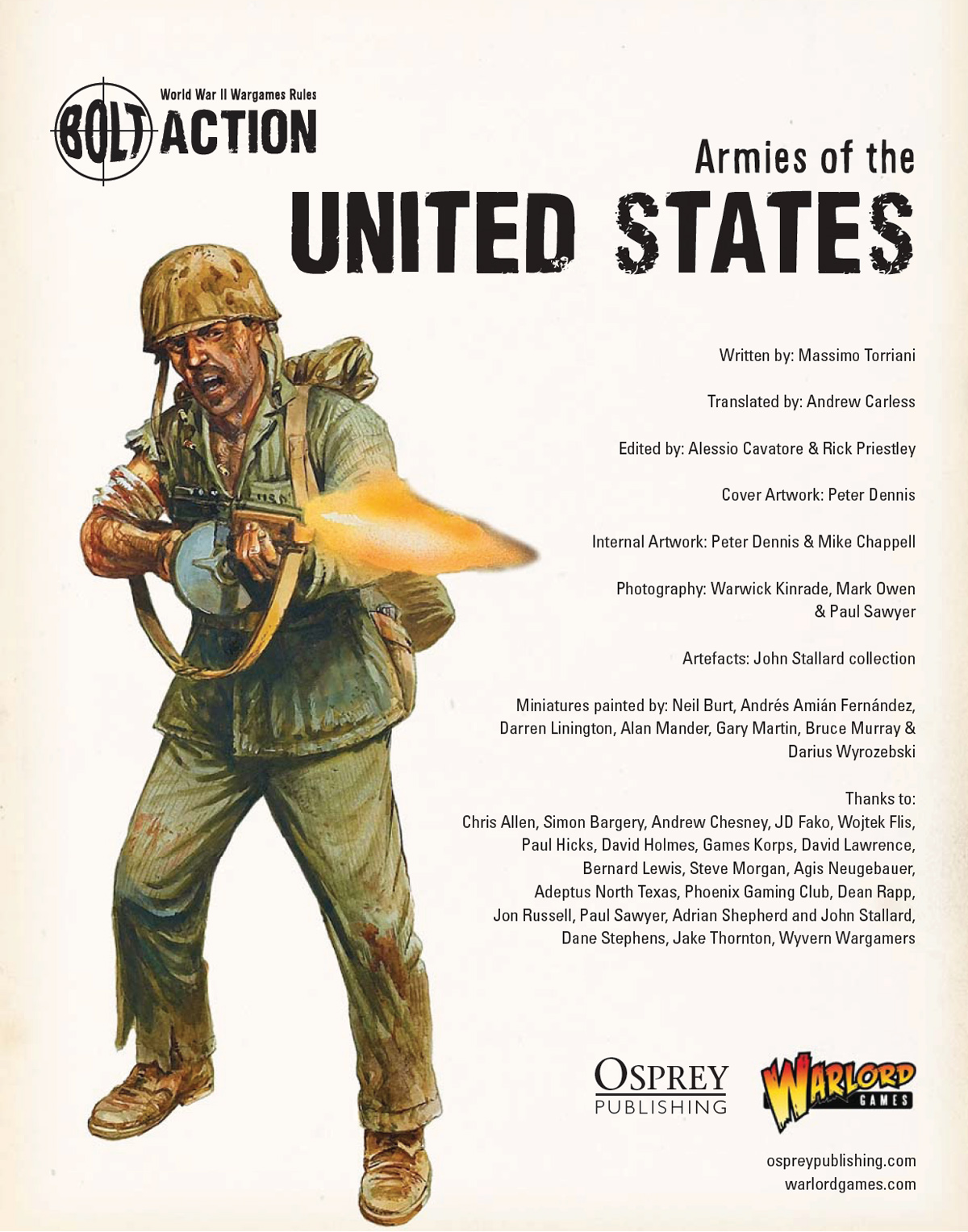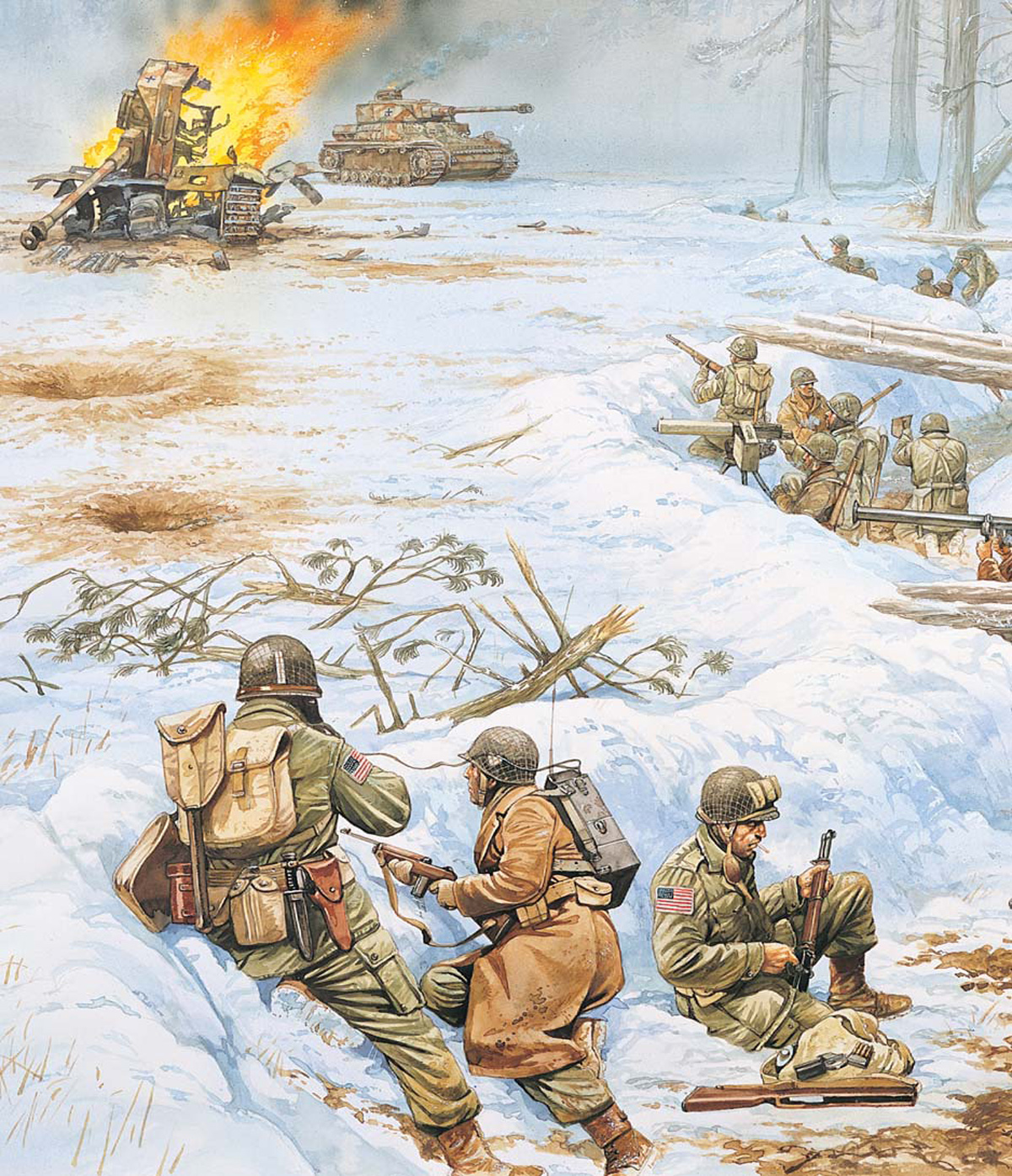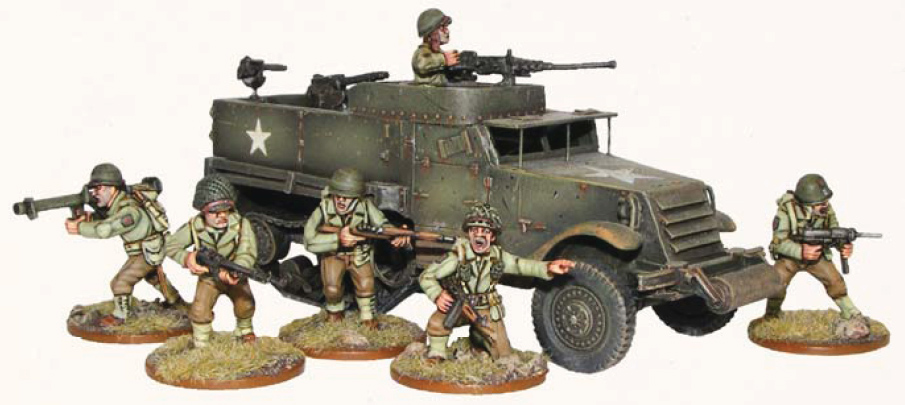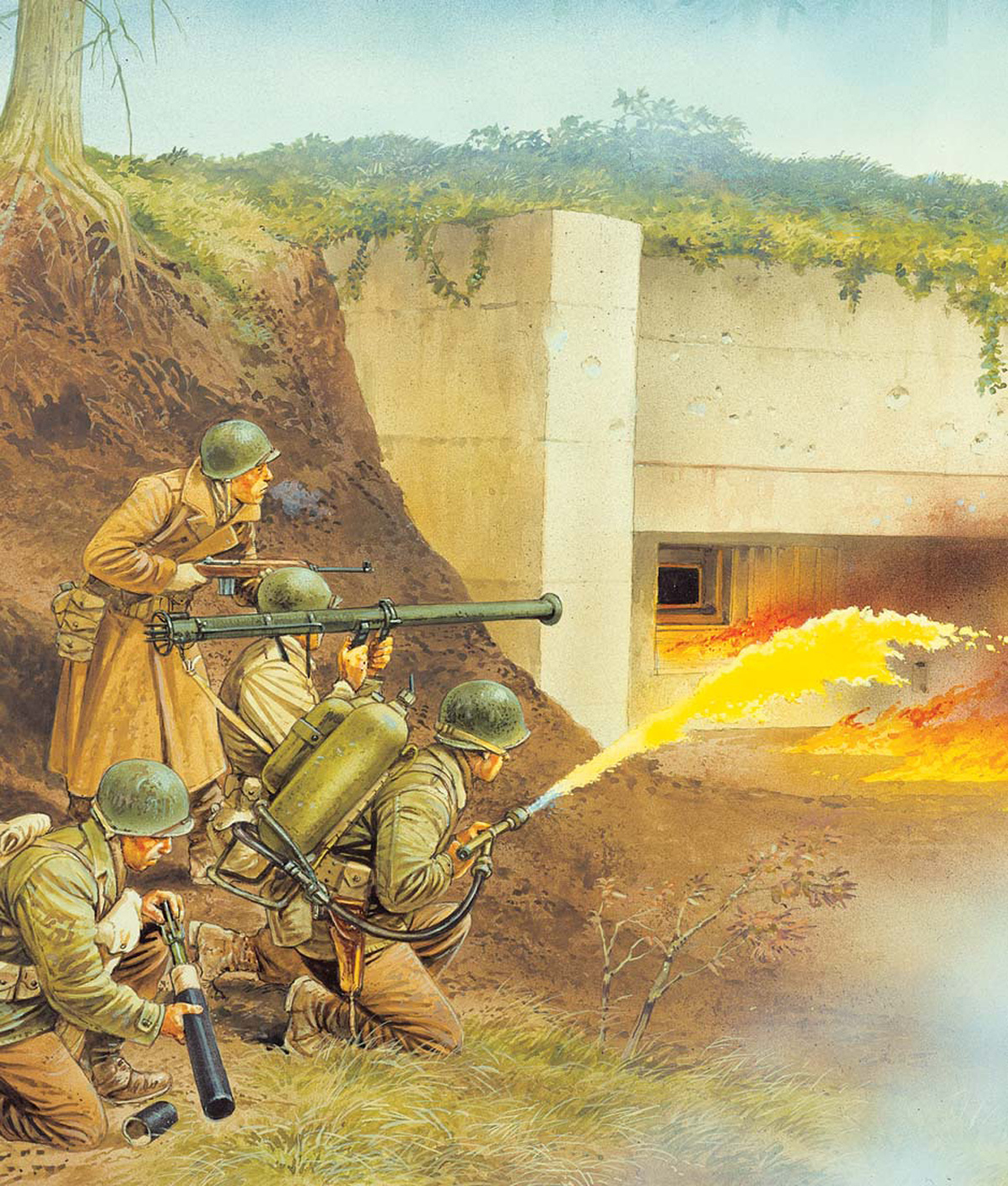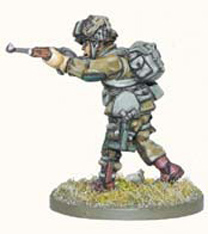CONTENTS
WHAT IS THIS BOOK?
Christmas in Bastogne, by Peter Dennis Osprey Publishing Ltd. Taken from Campaign 145: Battle of the Bulge 1944 (2).
T his book is a supplement for the Bolt Action World War II tabletop wargame. It contains all the background, rules and Army List information needed to field an American Army in the Bolt Action game. Inside youll find details of organisation and equipment covering American forces from the beginning of their involvement in the war (8 December 1941, the day after Pearl Harbor) to the very end (2 September 1945, the surrender of Japan).
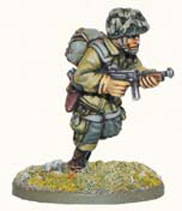
As you will see the main Army List includes all the necessary gaming details for all the troop types, vehicles and equipment fielded by the Americans in World War II. Alongside this main list you will find 17 specific Theatre Selectors. These indicate which kinds of troops, weapons and vehicles are available during different phases of the war and in different theatres. During four years of fighting the American Army underwent incredible changes both in terms of equipment and military training. Following setbacks at Kasserine Pass in North Africa and all the way to the triumphal march towards Berlin, the Americans learnt from their mistakes and transformed their army into the most potent war machine of its time. By using the Theatre Selectors in conjunction with the main Army List you will find it is possible to recreate a representative American force from any point during the war.
To avoid a lot of tedious repetition, the main Army List includes all the rules needed for each kind of unit as well as all the options potentially available to it. The Theatre Selectors narrow this information down as appropriate to that specific campaign or phase of the war. The Theatre Selectors indicate the predominant kinds of troops and equipment available during a campaign or at a certain time, but exceptions are perfectly allowable so long as both players agree.
US Army squad debuses from its M3 halftrack transport
THE AMERICAN ARMY OF WORLD WAR II
US troops assaulting a German bunker, by Peter Dennis Osprey Publishing Ltd. Taken from Elite 160: World War II Infantry Assault Tactics.
I have full confidence in your courage, devotion to duty, and skill in battle. We will accept nothing less than full victory.
General Dwight D. Eisenhower
PEARL HARBOR
On 7 December 1941, without any prior declaration of war, combined Japanese Air and Naval forces launched an attack on the American base at Pearl Harbor. In just over an hour, 350 Japanese aircraft took off from aircraft carriers and sank four American battleships. More than 3,000 people lost their lives in this surprise attack, including around 200 civilians. On 8 December 1941 President Franklin D. Roosevelt, in agreement with Congress, declared a state of war between the United States and Japan. Germany and Italy declared war on the United States four days later. Between December 1941 and February 1942 alone, more than 180,000 Americans signed up to serve their country. Of these around 40% were between 18 and 21 years old (the average age was 26).
TRAINING AND EQUIPMENT
Equipping, training and coordinating such a huge number of men was no easy matter. The training of new recruits was, in many cases, entrusted to newly promoted instructors who were not always up to the job. The pace of training and preparation was accelerated as quickly as possible the average time before appointing NCOs, for example, was only thirteen weeks. Paratroopers, Rangers and, later on, the Marines took longer to train. In order to join any of these elite forces it was necessary to pass tough selection tests before undertaking one of the hardest training courses around. Only the best made it, and those who failed were sent back to their infantry units. If American forces were short on training they were very much ahead when it came to equipment. Unlike other armies, the infantry had a semiautomatic rifle with an impressive rate of fire compared to the bolt-action weapons in general use by other nations. The one thing American squads did lack was an effective light machine gun (LMG). Instead, they carried the Browning Automatic Rifle (BAR). This weapon only had a 20-round clip and could not hope to match the rate of fire or range of a belt-fed machine gun. On the other hand, American infantry were supported by some very good medium and heavy machine guns (MMGs and HMGs) the notorious Browning M1919A4 .30-cal. and the excellent Browning M2 HB .50-cal. respectively.
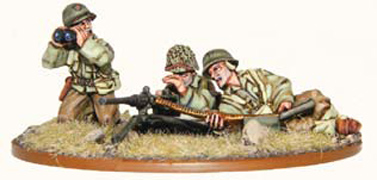
M2HB .50-cal heavy machine gun team
ONE SIZE FITS ALL
Where and when: throughout the war on all fronts.
The distinctive shape of the M1 helmet is immediately recognisable whenever you see images of American troops in World War II, from waist gunners in B17s to spray-soaked Marines and muddy infantry. This was a brand-new item at the time, having only been accepted by the army in 1941. It was part of their standardisation programme that led to the adoption of the Garand, M4 medium tank, and liberty ships among other items, and as a standard item they made only one size.
This might seem a bit odd as soldiers plainly come in a variety of sizes, but in practice it worked very well and remained in service until the mid 1980s. The M1 is made of two parts: the outer steel shell and an inner liner, with one fitting snugly inside the other. Inside the liner was a series of webbing straps that could be adjusted to fit the wearer, allowing the helmet to be made in one size, but genuinely fit all its users.
Overall, the World War II production run of M1 helmets exceeded 22 million.
DEATH AND REINFORCEMENTS
It may be surprising to learn that mortality on the battlefield was greater in World War II than in World War I. Divisional turnover the proportion of replacement personnel within a Division reached 100% and even more than 200% in some American formations. While the Germans and British would usually eliminate under-manned units and create new ones, the Americans tried to keep units at full strength. For this reason American squads kept their breakdown (the number of platoons per company, number of men per squad, etc.) unchanged throughout the war. As it turned out, this was not necessarily a good thing as experienced men tended to gang together leaving the new arrivals to fend for themselves. This led to a rise in casualties amongst green troops. Often, fresh recruits were shunned and veterans even refused to learn their names, certain that they wouldnt be around long. Only after a few weeks in combat did this prejudice disappear and the men become part of the squad.

